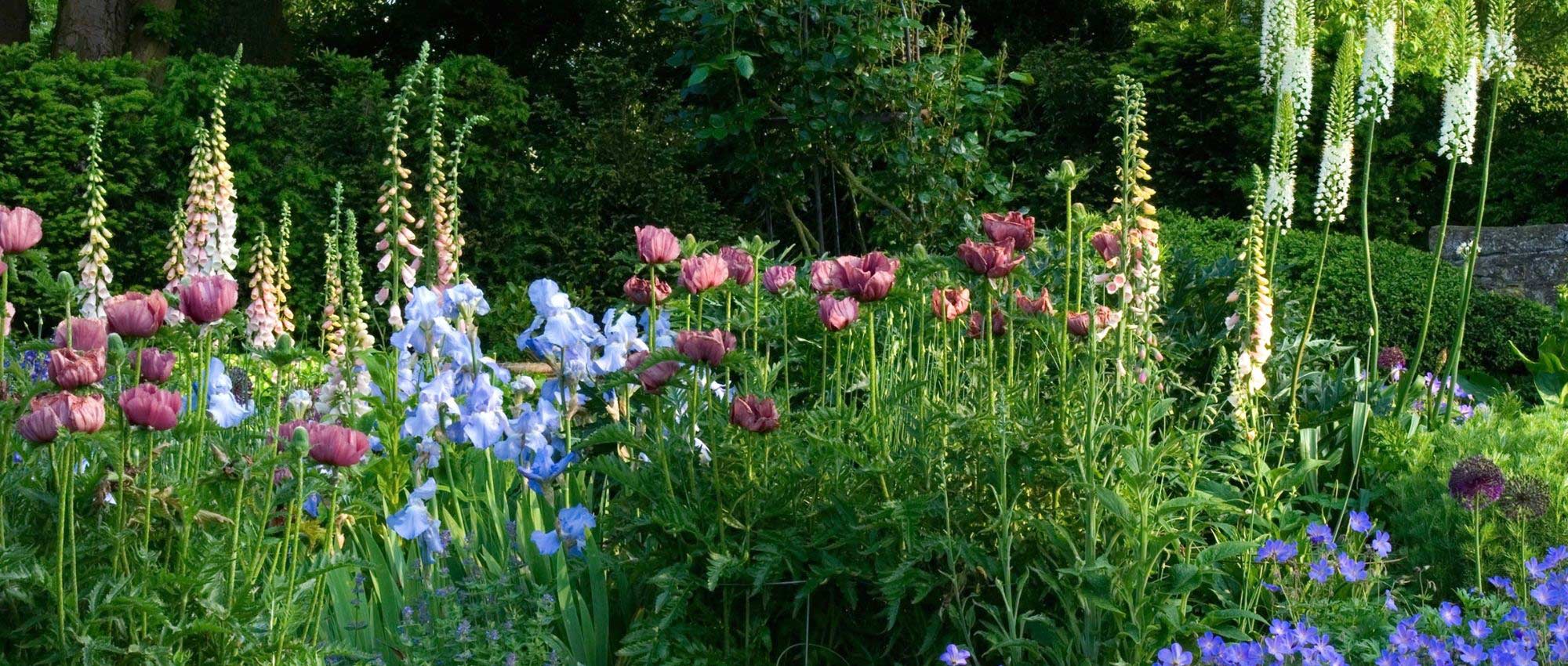
English garden: 10 emblematic plants
for natural and romantic mixed borders
Contents
English gardens are appreciated because they recreate a free, natural and very romantic atmosphere. There is great diversity in the choice of plants. To recreate this type of garden, ideal is to have large, handsome leafy trees on the site, with elegant architecture to compose a natural landscape with shaded areas. Perennial plants are also important, and are often gathered in mixed-borders. It is interesting to include plants with a light, airy habit (campanulate, gypsophila…) and plants with very delicate, refined flowering, such as astrances. For colours, favour white, blue or mauve flowering, fairly soft. Avoid garish, overly vivid and artificial hues. Likewise, foliage plays an important role, as English gardens are very verdant. Hostas and ferns, for example, will fit in easily.
For more ideas and inspiration, discover plants that seem most emblematic of English gardens!
Rose bushes
Roses are undoubtedly the most iconic plant in English gardens. They bring a great deal of romance and delicacy, whether planted singly or in a border. We recommend varieties with double flowers and soft colours. Discover in particular the David Austin varieties, which offer scented, perpetual-flowering flowers, available in a lovely palette of colours. You can choose, for example, varieties such as ‘The Ancient Mariner’, ‘Gertrude Jekyll’, or ‘Munstead Wood’. They offer very elegant flowering. Also consider climbing roses, such as ‘Constance Spry’, which bears large, beautiful pale pink flowers.
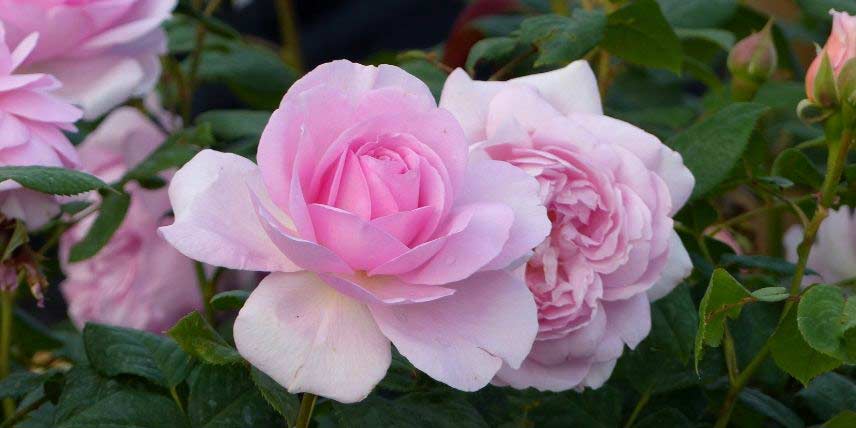
David Austin rose ‘The Ancient Mariner’
→ Discover our wide range of roses as well as all our advice on choosing, pruning and caring for your roses
Clematis
Clematis are magnificent climbing plants with large, star-shaped flowers. These are generally single but there are also varieties with double flowers, made up of several ranks of petals. They pair wonderfully with roses, creating a romantic, delicate ambience. You can train them up an arch or arbour: their voluble stems cling easily to their support. Clematis thrives in sun with roots in shade, in soil that stays relatively cool. Generally, climbing plants fit very well into English gardens. You can complete scenes with other climbing plants, such as wisteria or Virginia creeper.
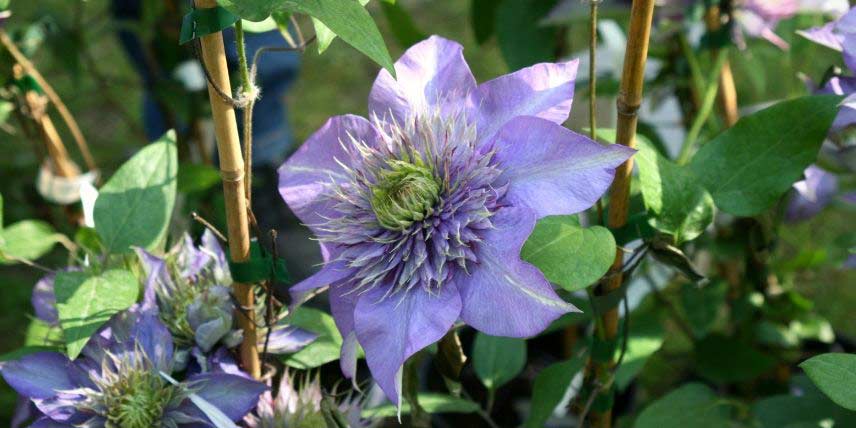
Clematis ‘Multiblue’
→ Treat yourself to one of our magnificent clematis and follow our tips on planting, pruning and caring for them
Discover other Cottage garden perennials
View all →Available in 0 sizes
Available in 0 sizes
Available in 0 sizes
Available in 0 sizes
Available in 0 sizes
Available in 0 sizes
Available in 1 sizes
Available in 0 sizes
Available in 0 sizes
Available in 1 sizes
Foxgloves
Foxgloves bear long upright flowering spikes composed of tubular flowers. They have a rather natural appearance and are ideal for adding a little height and verticality to a border. They can reach 1.5–2 m in height. For an English-style garden, we particularly recommend Digitalis purpurea, which produces beautiful purple flowers. But you can also choose a white-flowered variety, such as Digitalis purpurea ‘Alba’. Foxgloves prefer soils rich in organic matter, slightly acidic, relatively cool but not waterlogged. They will thrive if planted in partial shade. Foxgloves are short-lived but can self-sow.
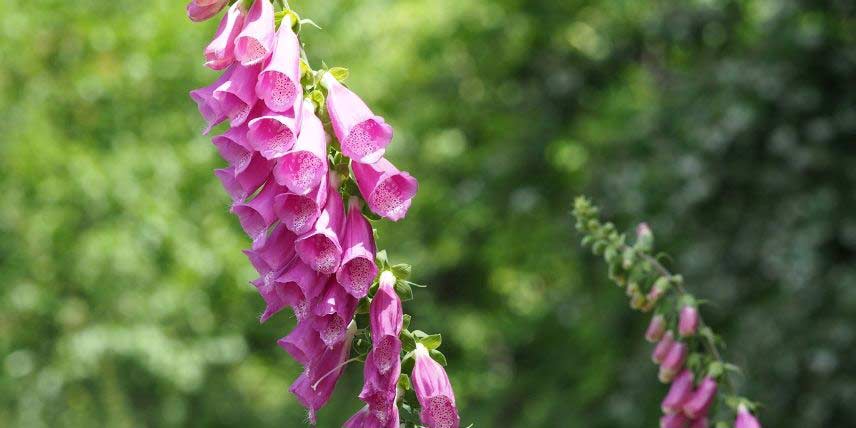
Digitalis purpurea
→ Discover our collection of foxgloves as well as our care guides to help you grow them and combine them successfully in the garden
Hostas
Hostas are perennials with very decorative foliage, giving them a natural, luxuriant appearance. Their leaves are broad, with beautiful ovate or cordate shapes, and can take different shades depending on the variety: green, bluish, golden, variegated with yellow, cream-white, blue… In addition, hostas also offer interesting flowering, in the form of mauve or white bell-shaped flowers. These perennials thrive in shade, in rich, moist soil. They are long-lived plants.
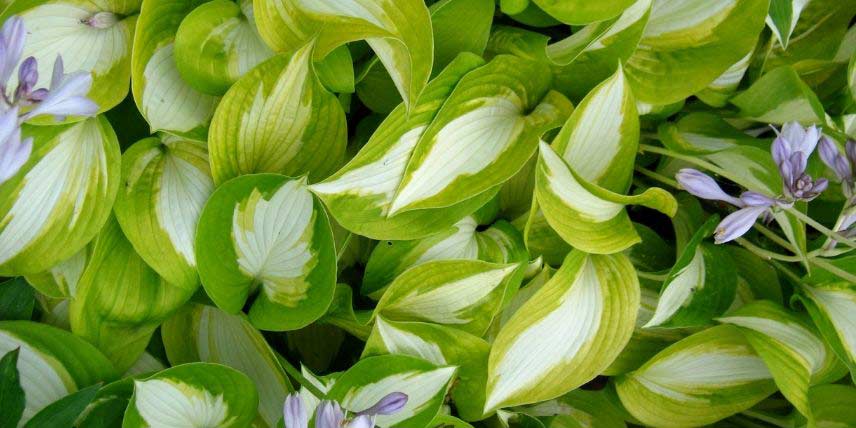
Hosta ‘Summer Music’
→ Find the most beautiful varieties of hostas in our nursery, all our advice on choosing, growing and combining them in the garden, as well as 4 dwarf hostas and 4 giant hostas
Delphiniums
Also called larkspur or delphinium, Delphiniums are plants that generally have blue flowering, in the form of upright spikes, reaching nearly two metres in height. They are prized for structuring borders. Their flowers are melliferous, appreciated by pollinators that visit to forage. Delphiniums also have attractive leaves, palmate and divided. They need sun and will thrive in deep, fertile, rich, moist but well-drained soil.
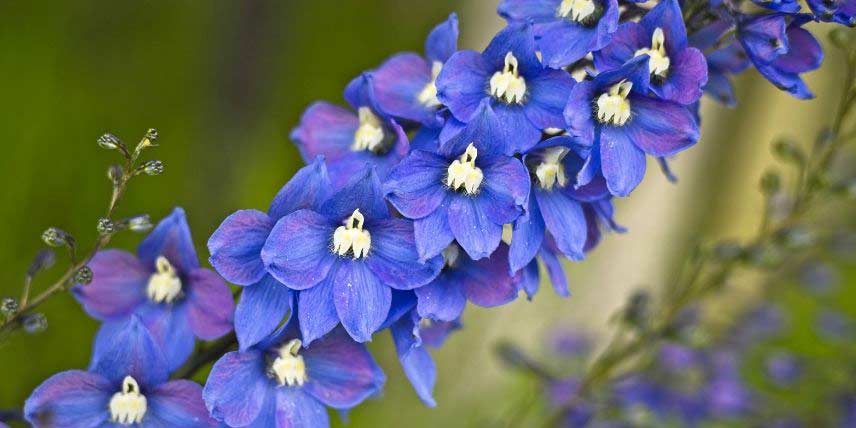
→ Choose from nearly 30 varieties of delphiniums and, to learn all about their cultivation, consult our guide: “Delphinium or larkspur: Planting, sowing, care”
Phlox paniculata
Unlike small mat-forming phlox (Phlox subulata), Phlox paniculata have tall, erect stems topped by clusters of flowers. These are five-petalled flowers, often pink, mauve, white or bluish. Flowering takes place between July and September–October, depending on variety. Leaves of Phlox paniculata are deciduous. There are varieties with variegated leaves, such as Phlox paniculata ‘Becky Towe’.
For an English garden, you can also choose Phlox divaricata, which also produce delicate, fragrant flowers, often pale blue, mauve or white.
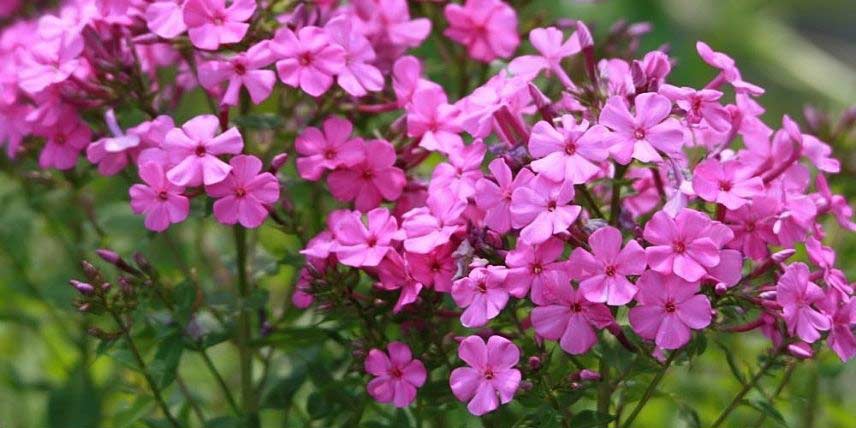
Phlox paniculata (photo David J. Stang)
→ Don’t miss our extensive range of Phlox, discover all our tips to choose, grow and combine Phlox and Phlox: which to choose
Campanulas
Campanulas also have a place in English gardens. They offer delicate, romantic and quite natural flowering. Their flowers take the form of little bells, often blue-mauve. They are fairly easy to grow, requiring little maintenance. In an English garden, we particularly recommend growing peach-leaved campanula, Campanula persicifolia. It forms upright stems reaching up to 80 cm in height. It will easily find a place in a mixed-border, and is ideal for composing bouquets.
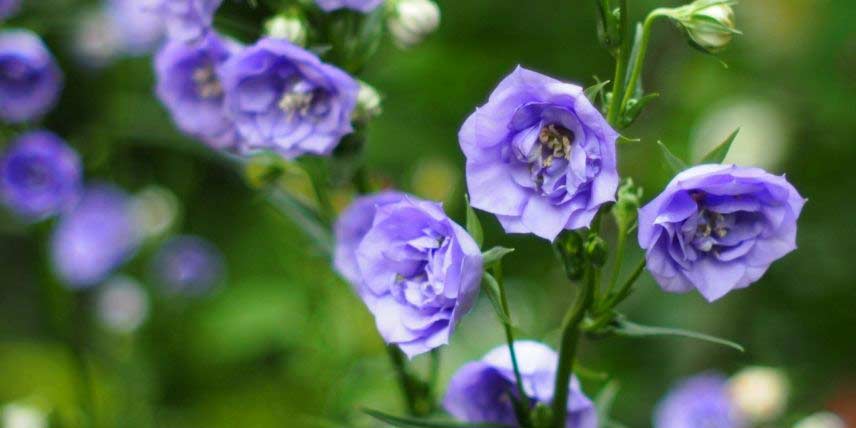
Campanula persicifolia ‘La Belle’ (photo M’s Photography)
→ Almost 60 varieties of Campanulas await you in our nursery and, to learn all about their cultivation, consult our fact sheet: “Campanulas: planting, cultivation and maintenance”
Hardy geraniums
Hardy geraniums, not to be confused with pelargoniums, are plants that produce beautiful five-petalled flowers, often blue, violet, mauve, pink or white. There are many species and varieties. They offer abundant, long-lasting flowering. Their foliage is decorative too. It is palmate, and more or less divided depending on variety. Hardy geraniums act as groundcover that prevents weeds from growing. They are robust, fairly disease-resistant, and very hardy.
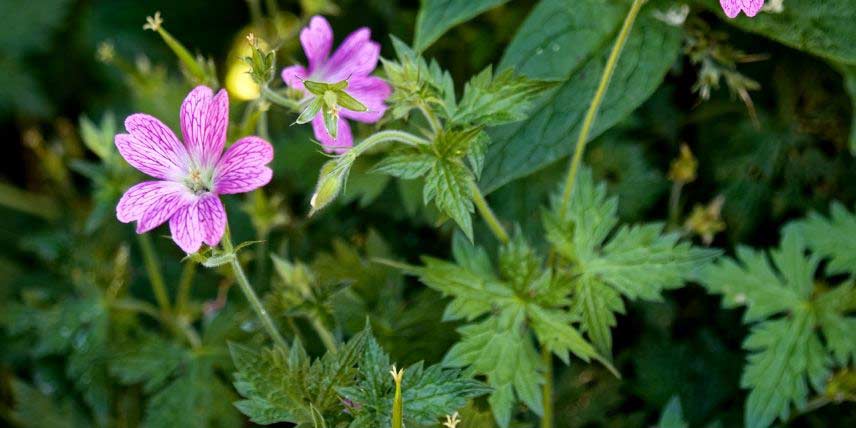
Geranium endressii (photo Acabashi)
→ discover our collection of hardy geraniums and all our tips on choosing, growing and pairing them in the garden
Lady's mantle
Alchemilla is a small perennial plant that offers superb green leaves, palmate and fan-shaped. These are water-repellent, catching drops of rain or dew. Alchemilla also offers yellow-green flowering, made up of numerous tiny flowers. It prefers partial shade and dislikes scorching sun. It tolerates all soil types, provided they remain relatively cool. This small perennial is full of delicacy and poetry. It is also a medicinal plant.
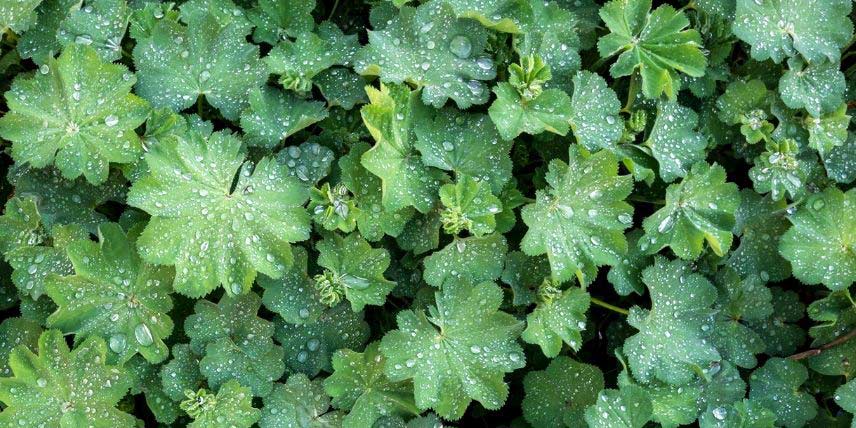
Alchemilla mollis (photo Uoaei1)
→ Discover our alchemillas and for everything on their cultivation, consult our fact sheet: “Alchemilla: planting, cultivation and maintenance”
Astrantia
Astrantia is a perennial with extremely fine, delicate flowering, in white, silvery or pinkish tones. Its inflorescences form small umbels, surrounded by bracts that create a star-shaped appearance. Flowering lasts quite long (sometimes three or four months). Foliage is also decorative, palmate and dissected in form, generally green, although variegated varieties also exist. Astrantia is a hardy plant but grows slowly. Ideally plant in partial or light shade, in a rich, moist substrate.
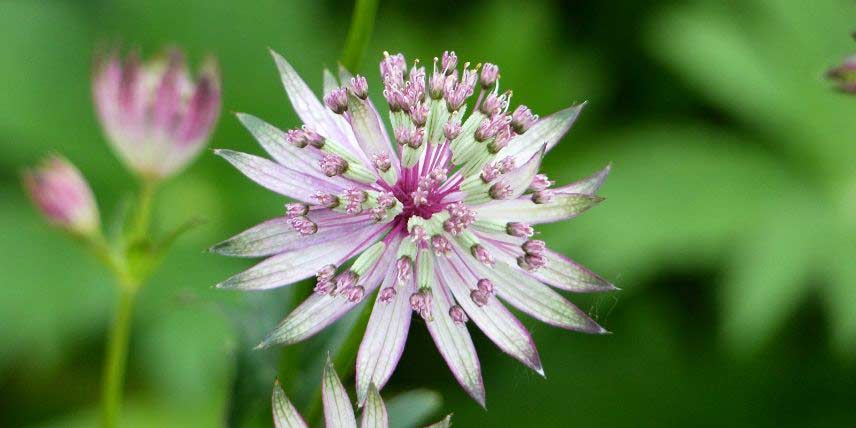
Astrantia major ‘Ruby Star’
→ Most beautiful Astrantia varieties are in our nursery — discover them… as well as all our tips for choosing, growing and pairing Astrantia
- Subscribe!
- Contents
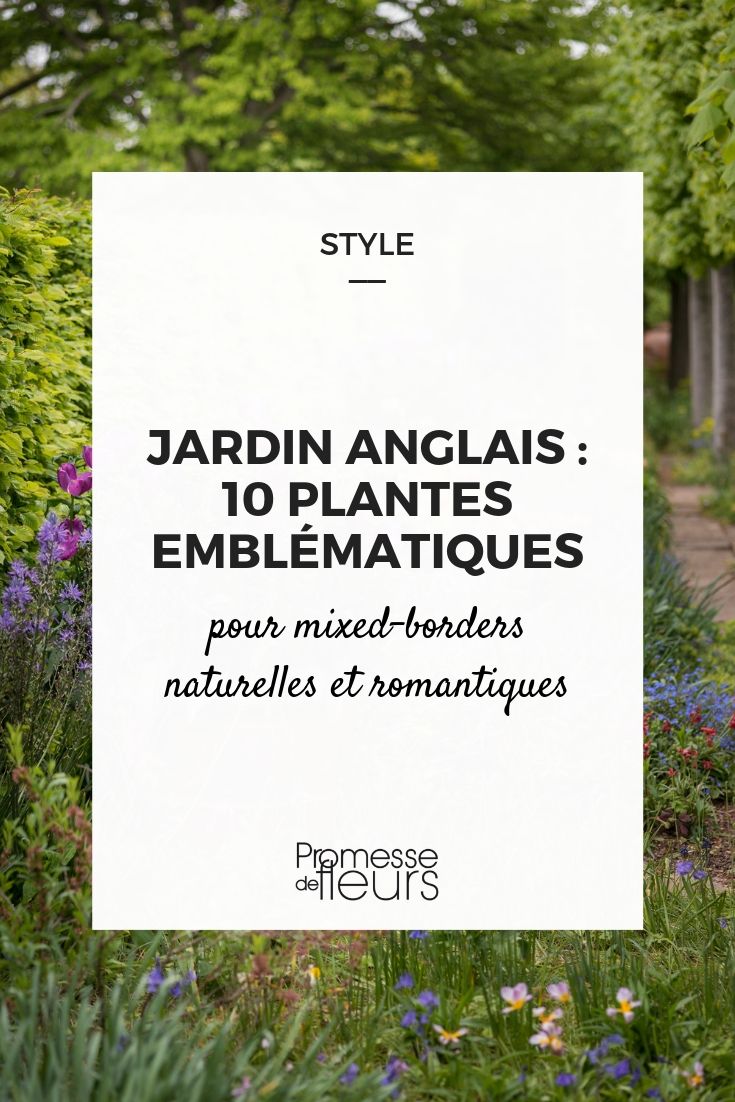































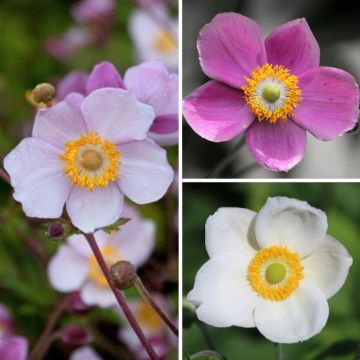
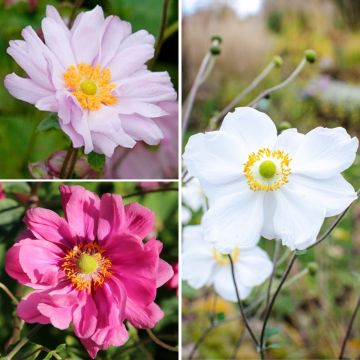
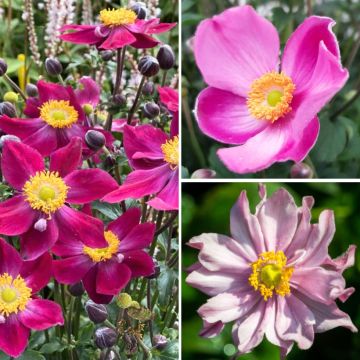
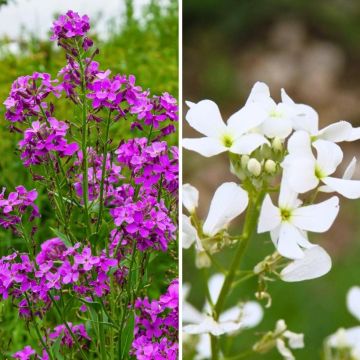
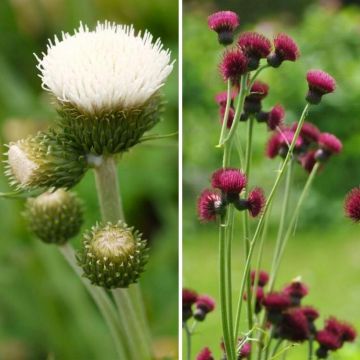
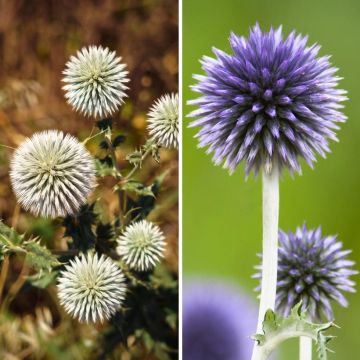
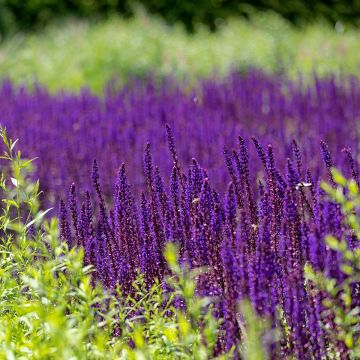
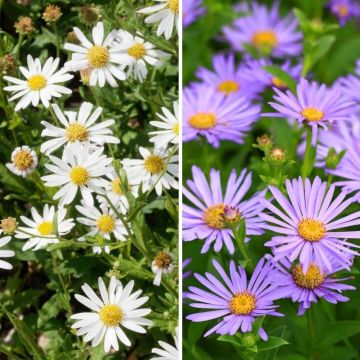
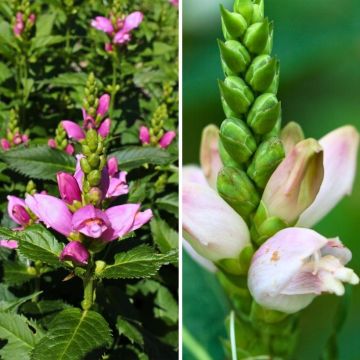
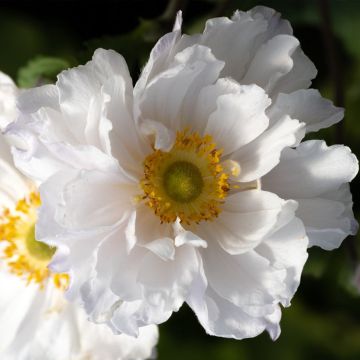
Comments